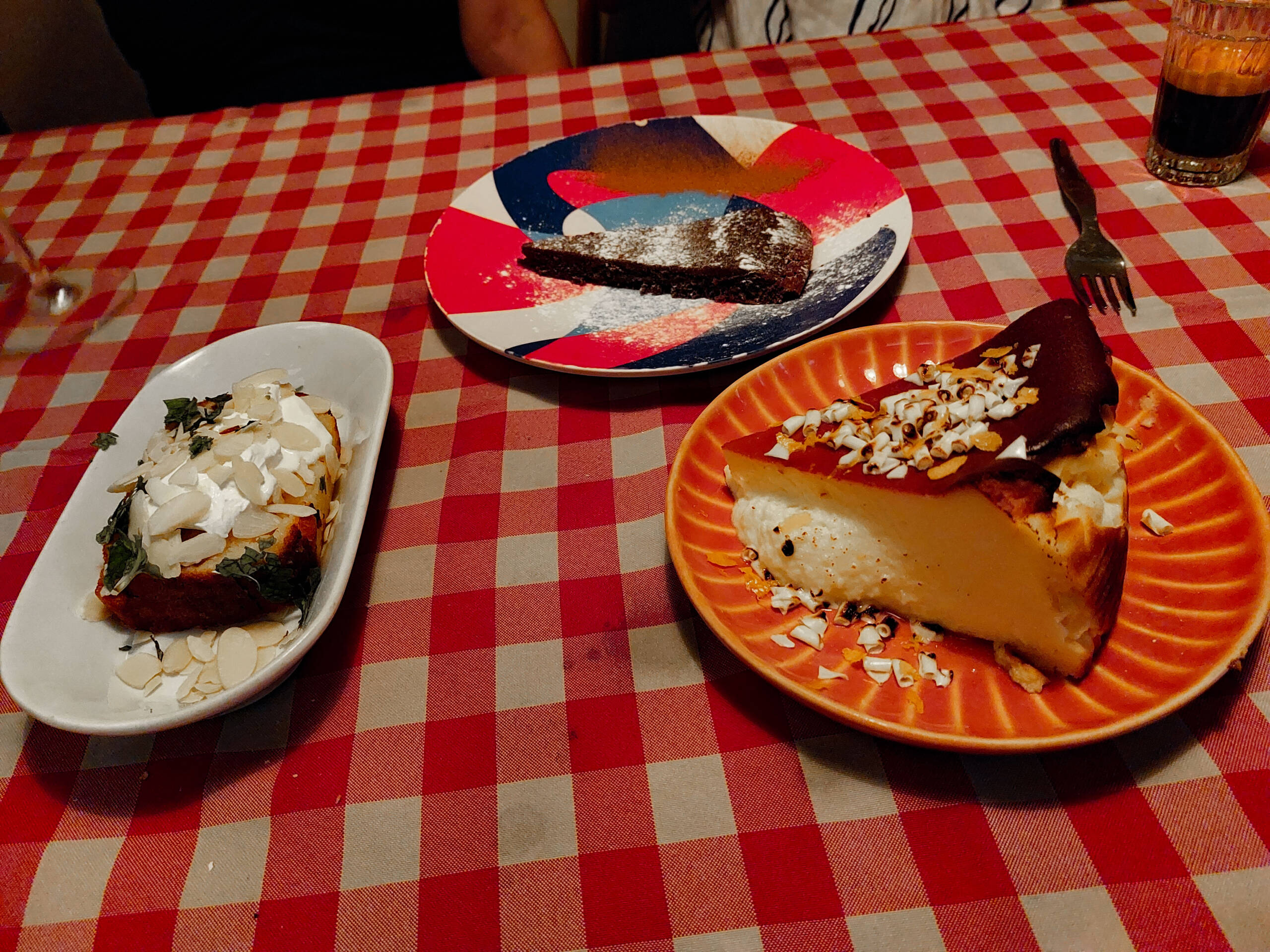There’s something about sitting down at a checkered table, that classic red-and-white pattern, that immediately sets the stage for a meal that isn’t about speed but about savoring. On this particular afternoon, the table became a canvas of desserts, each one carrying its own story. To the left, a rustic slice of cake smothered in almond slivers catches the light—flaked and uneven, almost messy in the most endearing way. You can see the herbs sprinkled across the top, a little green against the pale cake, suggesting something homemade and quietly thoughtful, the kind of dessert a grandmother might bring to the table without ceremony.

At the center, the star attraction: a towering wedge of cheesecake. It looks dense at first, but the fork slides in like it’s cutting through a cloud. The top is darkened, caramelized, and just a bit imperfect, the way a Basque cheesecake shows off its scars with pride. Curls of white and dark chocolate are scattered over it, as if someone had shaved them straight onto the plate in the last possible moment. This is indulgence at its fullest—creamy, rich, with just the right hint of bitterness from the burnt top to keep it from being cloying.
And then, off to the side, there’s the quiet counterpoint: a slim slice of chocolate cake, thin as a postcard, dusted with powdered sugar on a bright, abstract plate. It’s almost shy compared to its louder neighbors, but that’s exactly why it works. A reminder that sometimes the simplest bite—a soft, cocoa-rich mouthful, lightly sweet—can hold its own without needing layers of cream or garnishes. Together, the three plates form a little trilogy, each telling its own story but somehow making more sense when shared.
Of course, no Spanish or Portuguese table of sweets feels complete without a cortado to tie it together. That small glass of espresso cut with just enough milk is the bridge between indulgence and pause, sharp yet smooth, the sip that resets your palate between forkfuls of cheesecake and almond cake. It’s a drink for people who don’t want the heaviness of a latte or the sharpness of straight espresso but who understand that good coffee is about balance. You swirl the glass absentmindedly, watching the crema cling to the sides, and take your time because there’s no reason to hurry.
The table tells its own story, too: a fork left resting mid-conversation, a glass pushed slightly off center, the checked cloth bearing the faint marks of a meal well-lived. Around it, friends lean in, conversations overlap, laughter breaks in waves. Someone inevitably offers a bite of their cake, and someone else pretends to hesitate before diving in. It’s not just dessert—it’s the ritual of sharing, of tasting together, of stretching time a little longer so that one afternoon feels like a memory before it’s even ended. Moments like this remind you that cortado time isn’t just about coffee; it’s about letting the sweetness of life linger on your tongue, unhurried, unpolished, perfectly human.
Leave a Reply